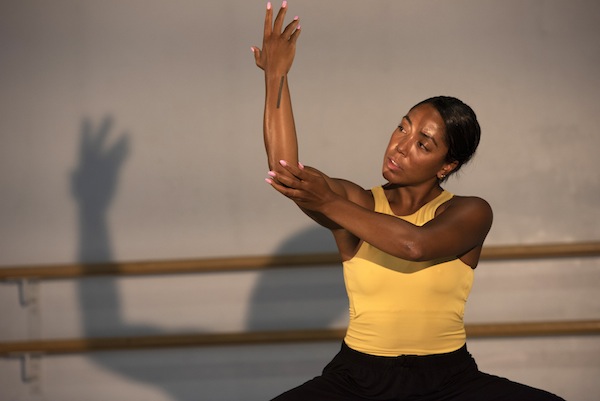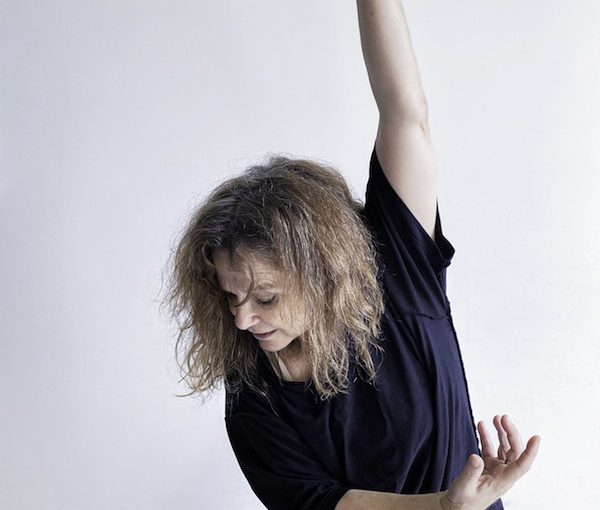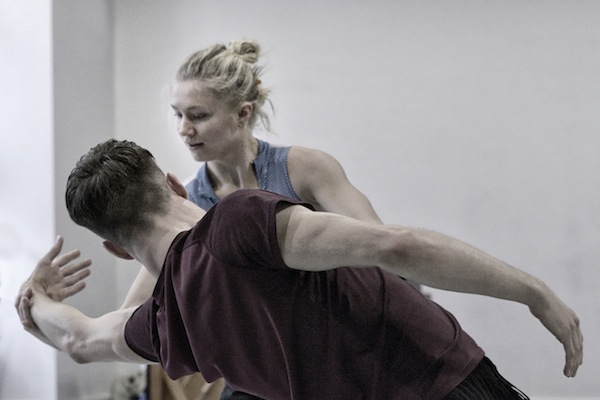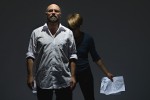Livona Ellis rehearses for the Dance Centre performance of Mary-Louise Albert: Solo Dances/Past into Present. (photo by Sylvain Senez)
Mary-Louise Albert: Solo Dances/Past into Present at the Dance Centre Nov. 19-21 features Livona Ellis, Vanessa Goodman and Rebecca Margolick performing works that were created for Mary-Louise Albert. Albert herself returns to the stage, at age 65, after a 19-year hiatus, to perform the first phase of a solo work commissioned from Serge Bennathan.
The three solos being reimagined were created during the last six years of Albert’s 20-year professional dance career (see jewishindependent.ca/generations-combine). They have not been performed since.
“When Mary-Louise first approached me to share her ideas about this project, I was transitioning out of a company,” said Ellis, who is performing Woman Walking (away) by Peter Bingham. “It seemed like the perfect work to describe the state of transition I was about to enter. I was leaving something behind and going towards the unknown. For me, the piece deals with a lot of questions and conversations we have with ourselves; reflecting on memories and being curious about the future.”
Ellis is a dancer with Ballet BC. She is on the faculty at Arts Umbrella and is the programming advisor for BC Movement Arts Society, which was founded and is directed by Albert. The rehearsal process for Woman Walking (away) started with Albert teaching Ellis the solo before COVID hit.
“It was great to have her insight and point of reference,” said Ellis. “I then worked with Peter Bingham where, in particular, he talked a lot about the intent and physical and theatrical sensations. It was very much an open dialogue, my input with Peter was very welcome.”
Recently, Ellis started rehearsing again with Albert. “She is really interested in melding our two interpretations and finding more ways for me to fully embody the solo in my own way,” said Ellis, mentioning her excitement to be sharing “the evening with these other talented and strong women – Vanessa, Rebecca and Mary-Louise – and to experience again performing in front of a live audience.”
Making the dance her own has been something that Goodman also has been working on with Albert, and with choreographer Tedd Robinson, who created oLOS.
“The work is a journey and allows me, as an interpreter, to transport myself into an embodiment that is both full of form and deconstruction. This is a beautiful place to experience the work, which is both deeply intuitive and dichotomous,” said Goodman, who is a choreographer herself, as well as artistic director of Action at a Distance Dance Society. She first worked on the piece more than a year ago, in May 2019, spending time with Albert and Robinson reenvisioning it.
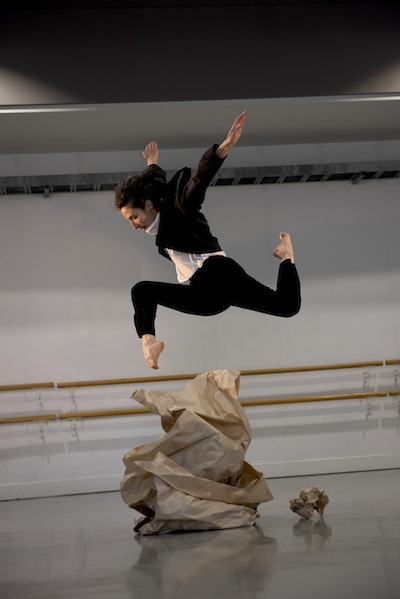
“We worked in Sointula, where Mary-Louise lives, visiting what the solo meant to all of us; examining the process physically and mentally of passing along a living archive,” explained Goodman. “Every time an artist embodies a work, it transforms with their system – this work continues to transform with, and for, me each time I inhabit it.
“oLOS has been a tremendous opportunity to be able to learn from both Tedd and Mary-Louise,” she continued. “They both have an incredible amount of information to share. Both of these artists have helped to shape dance on a national level, and it is a gift to be able to experience oLOS now with them.
“Both Tedd and Mary-Louise have been a part of my development for the last 18 years,” she added, “with Tedd teaching me in my last year of high school at CCDT [the School of Canadian Contemporary Dance Theatre, in Toronto] before moving out west and then providing me with great insight into my solo Container in Ottawa in 2015. And, Mary-Louise has supported me in so many ways as a creator over my professional career, allowing me to develop and share work…. These two artists have shared so much with me, and it is an exciting intersection to be able to work on this project all together.”
For Margolick, who is performing Allen Kaeja’s Trace Elements, the intersection is even more personal. The solo was created in 2000, she said, and she remembers watching her mother dance it at the Rothstein Theatre – Margolick was 9 years old at the time.
“Fortunately, Allen and I had our creation period prior to the pandemic,” said Margolick about the piece’s latest iteration. “We rehearsed without Mary-Louise during the remounting/creation process in Toronto. We had another week to finish the piece in Sointula, B.C., with Mary-Louise coming in to watch runs and sharing her thoughts and expertise on the work, past and present. As she is also my mom, she made sure to facilitate the space needed, with great sensitivity, for the work to become personal to me.
“Allen made space for me to experiment and try things out and his process can be summed up in three words – generous, kind and courageous. Every time I run the piece, it feels different emotionally and my reactions to the text vary day to day … it makes the work always feel alive. We say ‘reimagine,’ as we were all interested in how I can bring myself into the solo and give the tools needed to make it my own.”
Margolick is based in Brooklyn. A dancer and choreographer, she was a 2020 New Directions Choreography Lab Fellowship at the Ailey School and is a 2020 artist in residence at the Dance Deck here in Vancouver. As well, she is artistic associate of BC Movement Arts Society.
When Margolick worked with Kaeja in Toronto on the solo, she said, “We had many in-depth conversations around the subject of the piece, and Allen shared with me his experience around learning and researching his father’s story. Allen’s father was a Holocaust survivor, and creating work around the Holocaust became a way for Allen to process his dad’s experience. What came about from reimagining this solo was this merging of past and present with my movement and Mary-Louise’s movement, and a linking between different generations of the Jewish experience and family.”
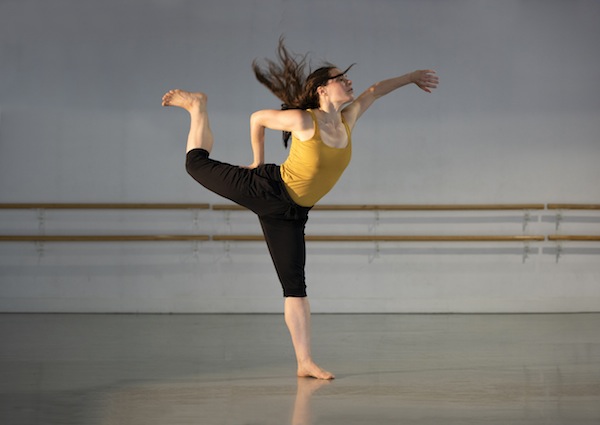
Since Albert is her mother, Margolick said there is an “inherent natural connection I have to her movement and expression. It’s a beautiful way to explore this connection between us.
“This piece speaks to me on many levels,” Margolick added. “The text is a conversation between a young German man and woman, 22 years ago, referencing Nazi Germany propaganda and the apathetic, yet unfortunately relatable, responses from the young woman about her mother’s experiences during the war. It is eerily relevant to what is happening around the world, as we reckon with the ongoing oppression of systemic racism, colonialism, greed, antisemitism and the rise of fascism and the alt-right. This piece for me is an eerie reminder of how quickly things can change, and how easy it is to fall into apathetic thinking, which dangerously leads to losing one’s empathy.”
Mary-Louise Albert: Solo Dances/Past into Present is part of the Dance Centre’s Global Dance Connections. In addition to the Nov. 19-21 live-stream shows, a recorded performance will be available online Dec. 3-17. For tickets and more information about both offerings, visit thedancecentre.ca.

